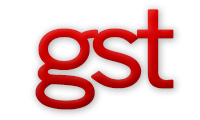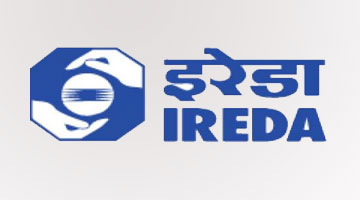Comparative Analysis under GST regime
JUNE 24, 2016
By Jigar Doshi, Khushbu Trivedi and Shreyas Mirji, SKP
 THE 'Goods and Services Tax' (GST),which is probably the most important tax reform in India till date, seems to have finally picked up momentum once again, with the Government releasing the model GST law in the public domain on 14th June 2016 with the purpose of inviting suggestions from all the stakeholders. THE 'Goods and Services Tax' (GST),which is probably the most important tax reform in India till date, seems to have finally picked up momentum once again, with the Government releasing the model GST law in the public domain on 14th June 2016 with the purpose of inviting suggestions from all the stakeholders.
The model GST law, in its current version, seeks to bring about various changes which will affect not only the tax structure but also the current business structure in the Indian economy.
Hence, it is important to analyse the changes and understand how they will impact the transaction flow as compared to the current indirect tax laws prevailing in India.
Brief analysis in this regard has been tabulated below with respect to certain crucial aspects under current indirect tax regime and GST regime as per the model GST Law:
1. Input Tax Credit (ITC)
|
Area
|
Current Provision under Indirect taxes
|
Model GST Provision
|
Difference/ Remarks
|
|
Cross Utilisation of CENVAT and ITC
|
Currently, availment and cross utilisation in case of CENVAT and VAT is not permissible
|
Taxes paid against CGST allowed as ITC against CGST. Taxes paid against SGST allowed as ITC against SGST
|
Cross utilisation shall be allowed except cross utilization of ITC between the Central GST and State GST would not be allowed
|
|
Eligibility of CENVAT/ ITC
|
CENVAT on services inward transportation of goods (and outward transportation upto the place of removal) is allowed
|
Input tax credit is available on transportation of goods
|
Manufacturers will benefit from this change at large
|
|
Restriction on ITC of Capital goods
|
CENVAT Credit for capital good is available in two instalment i.e. 50% in the first year and 50% in the subsequent year
|
Full Input tax credit in the first year itself
|
This would lead to positive impact on cash flows
|
|
Payment of taxes and filing of returns by seller to avail Input tax credit (ITC)
|
Presently under the CENVAT scheme there is no such requirement. However, some State VAT lawshave such restrictions for availing ITC.
|
As per section 16(11), Input tax credit to the Purchaser/ Receiver of service/goods will be available only if supplier of goods/ services pays taxes and files their return
|
The buyers will now have to ensure that their vendors have robust IT infrastructure and compliance process, so that the vendors do not default on timely and appropriate payment of taxes.
|
|
Reduction/ Reversal of ITC
|
Under most of the VAT laws, there are various reversals/reduction in credit on account of stock transfers outside the state, procurement of items ineligible for credit, etc.
Further, currently no restriction on purpose of use subject to certain conditions
|
ITC shall be restricted to credit in relation to business purpose. Thus, ITC for the purpose other than business shall not be permissible
|
Reversal's of ITC willbe minimized considerably as all outward supply of goods and/or services would be levied under one GST framework only. Thus, reversal of ITC will only be limited for exempted / Non - GST supplies.
|
2. Refund
|
Area
|
Current Provision under Indirect taxes
|
Model GST Provision
|
Difference/ Remarks
|
|
Increase in time limit for application
|
Application for refund to be filed within one year from the relevant date
|
Application for refund to be filed within two year from the relevant date
|
Increase in time limit for application of refund to 2 years is a welcome move and the same will ease the procedural aspects involved in filing the refund
|
|
Documents requirement if refund claim is less than Rs. 5 lakhs
|
Various documentary evidences such as output and input invoices, FIRCs, bank statements, various declarations etc. are required to be submitted irrespective of the claim amount
|
If the refund claim is less than Rs. 5 lakhs , then it shall not be necessary for the claimant to furnish documentary evidences.
Instead, he may file a declaration based on the documentary evidence available
|
This move will serve as a huge relief for small assessees which will prevent the cost, time and effort spent in maintaining huge documentation
|
|
Time Limit for sanction of refund
|
No such provision
|
It has been specifically stated that the officials will be required to issue refund order within 90 days from the date of receipt of application.
The term 'application' shall mean complete application containing all information as may be prescribed.
|
Since the time limit has been specifically stated, it will ensure speedy disbursement of refund claims by the authorities and reduce the hassles faced in the current regime
|
3. Time and value of goods/ services
|
Area
|
Current Provision under Indirect taxes
|
Model GST Provision
|
Difference/ Remarks
|
| Time of Supply of goods |
Excise duty to be paid on the manufacture of goods and removal from factory
VAT is paid on sale of goods within a state and CST is paid on sale of goods in interstate sale
Entry tax/Octroi is paid on entry of goods into state/local jurisdiction
Customs duty is paid on export/import of goods
|
CGST/SGST/IGST is payable at earliest of
a. Removal of goods or
b. receipt of payment or
c. issuance of invoice or
d. date on which buyer shows receipt of goods
Under Reverse charge basis, earliest of
a. Date of receipt of goods
b. the date on which the payment is made, or
c. the date of receipt of invoice, or
d. the date of debit in the books of accounts
|
It can be observed that there are many parameters in determining time of supply.
Thus, determining the time of supply and further maintaining reconciliation between revenue as per financials and as per GST rules could be a major challenge to meet.
|
| Time of Supply of Services |
Service Tax is payable at earliest of
1. date of invoice or
2. receipt of payment
(subject to invoice is raised within 30 days from completion of service)
Under Revere charge basis
the date on which the payment is made subject to other rules specified
|
CGST/SGST/IGST is payable at earliest of
a. Issuance of invoice or
b. receipt of payment or
c. date on which recipient shows receipt of services
Under Revere charge basis, earliest of
a. Date of receipt of services
b. the date on which the payment is made, or
c. the date of receipt of invoice, or
d. the date of debit in the books of accounts
|
|
| Value of supply of goods/services |
Excise - Value of goods shall be value determined under section 3, 4 or 4A of Excise Act 1944 read with rules made thereunder
Service Tax - Value of service shall be as per section 67 of the Finance Act, 1994 read with rules made thereunder
VAT - VAT is payable on sale price as defined under different state Act/rules
Customs - Customs duty is payable as per section 14 of the Customs Act, 1962 read with rules made thereunder
|
CGST/SGST/IGST would be payable on the transaction value. Transaction value is the price actually paid or payable for the said supply of goods and/or services between un-related parties.
(The value of the supply of goods and/or services which cannot be valued as per above shall be determined in such manner as may be prescribed in the rules e.g. related party transaction)
The transaction value is also said to include all expenses in relation to sale such as reimbursable expenditure, packing, commission, subsidies, discounts allowed after supply is effected etc.
|
The Valuation Rules appear to be drafted by taking few provisions from current Valuation provisions in vague in Excise (for e.g. concept of transaction value'), Service Tax (for e.g. concept of pure agent') and Customs (for e.g. concept of goods of like kind and quality'). |
4. Place of supply of goods/services
|
Area
|
Current Provision under Indirect taxes
|
Model GST Provision
|
Difference/ Remarks
|
|
Place of supply of goods/services
|
CST - Generally , CST is leviable at rate applicable to the sale of such goods in the State from where the interstate movement of goods has commenced
Service tax - Place of provision will be as per place of provision of service rules, 2012 - generally it is place of service recipient
|
Typically for goods the place of supply would be location where the good are delivered .
Whereas for services the place of supply would be location of recipient . However, there are multiple scenarios such as supply of services in relation to immovable property etc wherein this generic principle will not be applicable and specific rule will determine the place of supply.
|
At present inter-State supply of goods attract Central Sales Tax. Now, it provides that an inter-State supply of goods and/ or services will attract IGST (i.e. CGST plus SGST). Thus, it would be crucial to determine whether a transaction is an intra-Stateor Inter-State as taxes will be applicable accordingly.
In this regard, the model GST law provides separate provisions which will help an assessee determine the place of supply for goods and services
|
5. Reverse Charge Mechanism
|
Area
|
Current Provision under Indirect taxes
|
Model GST Provision
|
Difference/ Remarks
|
|
Reverse Charge Mechanism
|
Currently RCM is applicable majorly only for receipt of certain services
|
Under model GST Provisions, RCM shall be applicable both for receiving goods and/ or services
|
Additional burden in the nature of RCM on receipt of goods as well
|
Going through the above changes, there are certain welcome moves by the Government such as cross utilisation of inter state tax credit, availability of full credit on capital goods and minimising the requirements for small assessees for filing of refunds etc.
However, in spite of the positives, one cannot ignore the fact that the new regime will also pose many challenges in the form of increased compliance burden on the assessee and increasing variousinterpretational issues which can lead to a number of litigations.
Nevertheless, this timely release of model GST law in the public domain almost 10 months ahead of the probable implementation dateaugurs well for the stakeholders as they can gear up for GST in a more effective and efficient manner.
|
(DISCLAIMER : The views expressed are strictly of the author and Taxindiaonline.com doesn't necessarily subscribe to the same. Taxindiaonline.com Pvt. Ltd. is not responsible or liable for any loss or damage caused to anyone due to any interpretation, error, omission in the articles being hosted on the sites)
|
|









 THE 'Goods and Services Tax' (GST),which is probably the most important tax reform in India till date, seems to have finally picked up momentum once again, with the Government releasing the model GST law in the public domain on 14th June 2016 with the purpose of inviting suggestions from all the stakeholders.
THE 'Goods and Services Tax' (GST),which is probably the most important tax reform in India till date, seems to have finally picked up momentum once again, with the Government releasing the model GST law in the public domain on 14th June 2016 with the purpose of inviting suggestions from all the stakeholders.



